Mljet National Park Continues Plans to Care for Rare Noble Pen Shells
June the 2nd, 2022 - The tragically rare noble pen shell, of which there are believed to be only a mere twenty living speciments remaining in the Croatian Adriatic, appears to be a dying species. Mljet National Park, however, is continuing to do all it can to protect the remaining ones and encourage them to flourish in the southern part of the Croatian coast.
As Morski writes, throughout this year, the NP Mljet National Park Public Institution is firmly continuing with the project entitled "The preservation of the noble pen shell in the southern part of the Adriatic Sea", which is being co-financed by the Fund for Environmental Protection and Energy Efficiency of the Republic of Croatia.
In cooperation with the Sunce Association for Nature, Environment and Sustainable Development, collectors were set up in Veliko Jezero and the Lastovo Bay on Friday to catch young noble pen shells, should any of them be present within the general area. The collectors will be in the sea until November and will be a base on which perisha larvae can be caught.
Marine experts hope that there are still live adult noble pen shells located in relative proximity and which are close enough to each other for normal fertilisation to occur. Any noble pen shells which are found to be alive will be transported to the aquarium in Pula, where they will be taken care of and attempts at breeding in swimming pools will be made by those in the know.
The noble pen shell rescue project was created to repair the unfortunate situation in which we've seen the ongoing mass death of this strictly protected species across the Mediterranean. Back at the end of 2019, the noble pen shell was included in the Red List of critically endangered species due to a disease that affected it back in 2016 in Spain, and which by 2019, had sadly managed to spread to the Croatian Adriatic. The synergy of an aggressive parasite which causes the disease (Haplosporidium pinnae) and a type of bacteria which does the same (Mycobaterium sherrisii) has brought the noble pen shell to the very brink of extinction. Should it go over that brink, it's believed that there will be no turning back for this Mediterranean species.
If you are swimming and happen to come across a noble pen shell in Croatian waters, you'll be able to tell whether or not the specimen is alive by just gently passing your hand over. If it is alive, the shell will slowly close itself. In this case, do not touch it, but instead inform the Institute for Environmental Protection and Nature of the Ministry of Economy and Sustainable Development by email, explaining as best you can the shell's location: This email address is being protected from spambots. You need JavaScript enabled to view it..
For more, check out our dedicated lifestyle section.
5 Ways to Get a Free Week’s Stay in Croatia's Dream Destinations
February 24th, 2022 - If you happen to love spending time outdoors and have a few days to spare this spring or summer, Croatia’s national and nature parks offer amazing volunteering opportunities that involve a free week’s stay in some of the most spectacular locations in the country
We prepared a selection of five attractive volunteer programmes that are 5-10 days long and require up to 6 hours of work a day, with free accommodation, meals and transportation provided to participants. English speakers are encouraged to apply, as knowledge of Croatian isn’t a requirement for any of the following roles:
1. Dry Stone Restorer in Mljet National Park
Become a guardian of the past by restoring ancient dry stone walls in Mljet National Park. Traditional dry stone construction is inscribed in the list of intangible cultural assets of the Republic of Croatia, which means you’d literally help restore and preserve precious cultural heritage on Mljet island!
Volunteers will learn how to build and fix up walls, stairways and other dry stone structures. The job also involves clearing existing dry stone structures of vegetation, simple processing of stone using hand tools, and photographing dry stone walls before and after restoration.
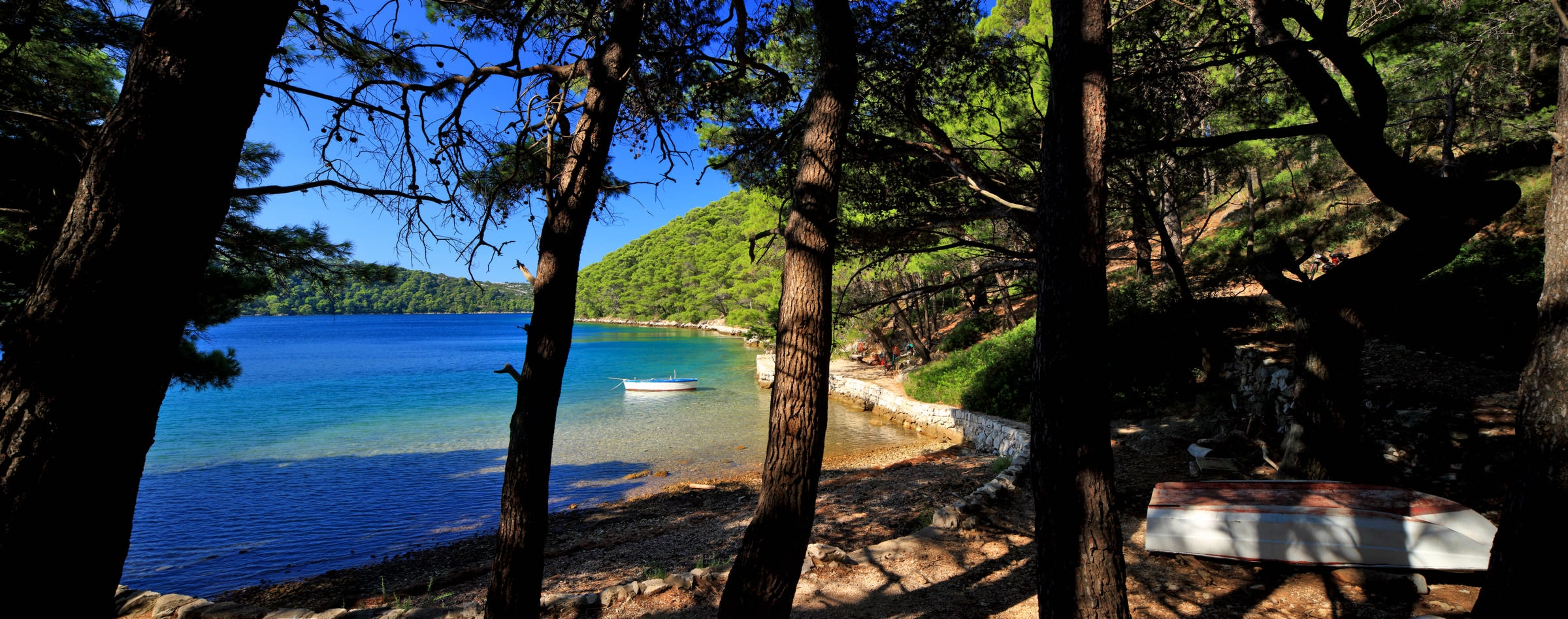 Mljet island / Photo © Mario Romulic
Mljet island / Photo © Mario Romulic
The programme takes place in April and is seven days long, including six days of work and one day off. Volunteers are expected to work six hours a day with a one-hour break, but considering that the physical work involved in this particular programme can be strenuous, the number or working hours can be reduced if needed.
All necessary tools will be provided by the Park. Accommodation is provided free of charge on Mljet island in the Collier building owned by the Park, which has seven rooms equipped with bunk beds, toilets, showers, a kitchen and a living room. Meals are also provided free of charge, with the Park delivering groceries to volunteers or providing free meals at the local hotel.
If stonemasonry isn’t your cup of tea and you’d prefer a less hands-on kind of creative work, may we suggest another volunteer programme on Mljet island:
2. Photo Amateur in Mljet National Park
A dream come true for anyone who loves island hopping and snapping pics of stunning landscapes (don’t we all?), this programme involves photographing the scenery and events in Mljet National Park in the period between April and June.
Depending on the time of year, volunteers will be required to photograph various locations, events and activities on Mljet island using their own gear. You’ll be capturing the island’s flora and fauna, cultural monuments and landmarks, historic sites, enchanting landscapes and fun summer events.
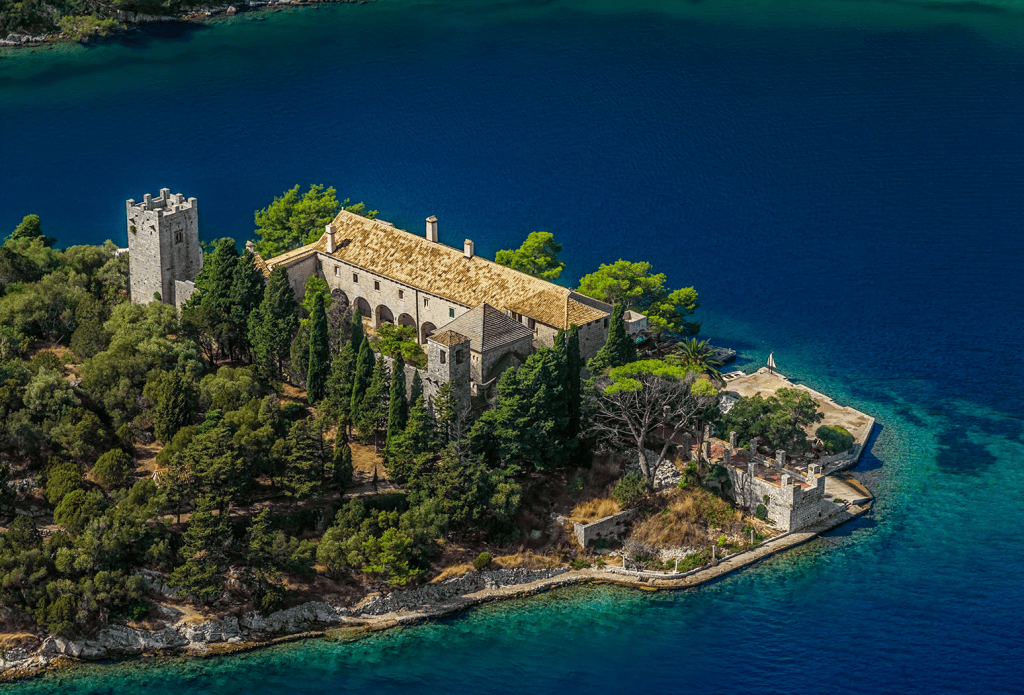 Mljet National Park / Photo: volonteri.parkovihrvatske.hr
Mljet National Park / Photo: volonteri.parkovihrvatske.hr
Those who choose to participate in this particular programme will sign a statement of the assignment of the photos to Mljet National Park. You’ll have to submit the photos shortly after the programme is over, and can look forward to seeing them featured in the Park’s publications in Croatia and abroad.
A minimum of one DSLR camera with a lens is required to partake in this programme.
You’ll have plenty of time to explore the island on your own time, and there’s no shortage of things to do: there are over 40 kilometres of hiking and cycling trails, you can rent a kayak or canoe to explore the saltwater lakes on Mljet, or take diving lessons with a certified instructor.
For all Mljet-based programmes, volunteers are to bear the cost of travel to Mljet island, and the Park will provide transport from the ferry port on Mljet to the place of accommodation.
3. Gull Catcher in Kornati National Park
Are you a fan of the great outdoors and love being in close contact with wildlife? Consider becoming a seagull catcher in Kornati National Park. Don't worry, you'll be releasing them too!
You’ll be joining the Park’s experts as they band and monitor Caspian gulls in the stunning Kornati archipelago, specifically on a few islands where seagulls are known to nest.
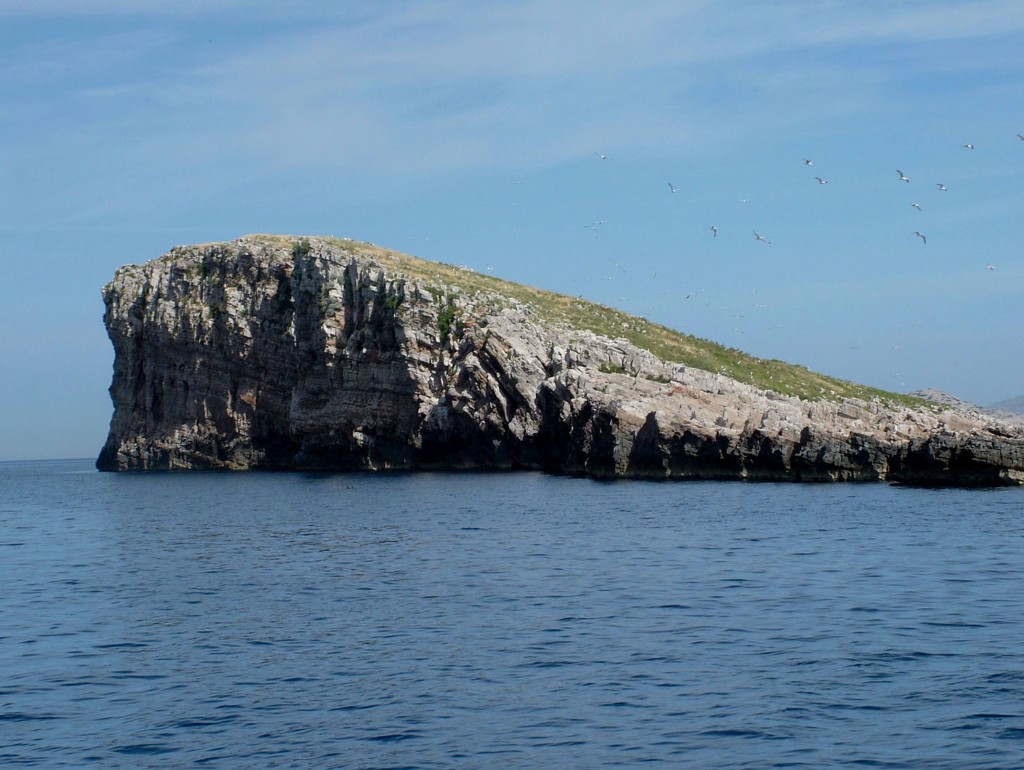 Kornati National Park / Photo: volonteri.parkovihrvatske.hr
Kornati National Park / Photo: volonteri.parkovihrvatske.hr
Do you dare to catch a young gull with your bare hands? If you do, you get to name the bird and take notes as it gets banded by a qualified employee of the Park. Banding and monitoring allows experts to track the behaviour and habitats of seagulls in order to collect data used to ensure protection of the species.
Volunteers will receive training prior to starting work and will be supervised by the Park staff. The programme takes place in May and June lasts about ten days, with volunteers expected to work seven hours a day.
Accommodation is provided and free, and in this case, it’s pretty amazing: you’ll be staying on a sailboat owned by the National Park Kornati, fully furnished and featuring 3 cabins, 6 beds, a living room, kitchen and toilet.
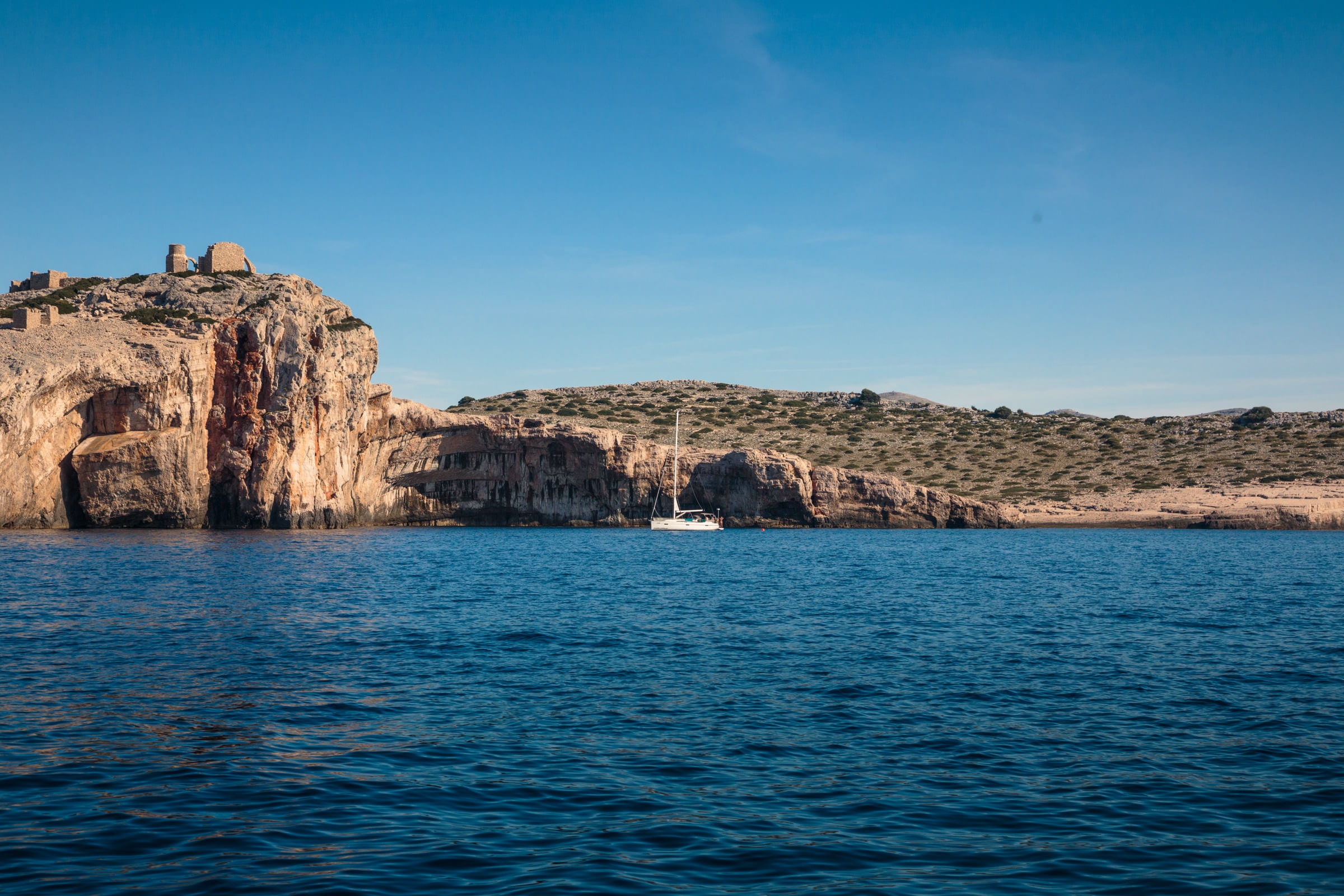 Kornati National Park / Photo © Mario Romulic
Kornati National Park / Photo © Mario Romulic
Groceries are provided free of charge, and volunteers can either prepare meals on their own or seek the help of the volunteer manager.
Volunteers have to arrange transportation to Murter island, while further transport from Murter and within the Park area is organised by the Park and free of charge.
4. Traditional Gardener in Lonjsko Polje Nature Park
Lonjsko Polje (Lonja Field) is the largest protected wetland in Croatia, located approximately 70 km south-east of Zagreb.
If you have a green thumb and don’t mind getting your hands dirty, you’d be a great fit for a traditional gardener in Lonjsko Polje Nature Park. You’d help clean up the untended plots in the Park and plant new seedlings around traditional wooden houses in the villages of Krapje and Čigoč - think of it as traditional landscape design!
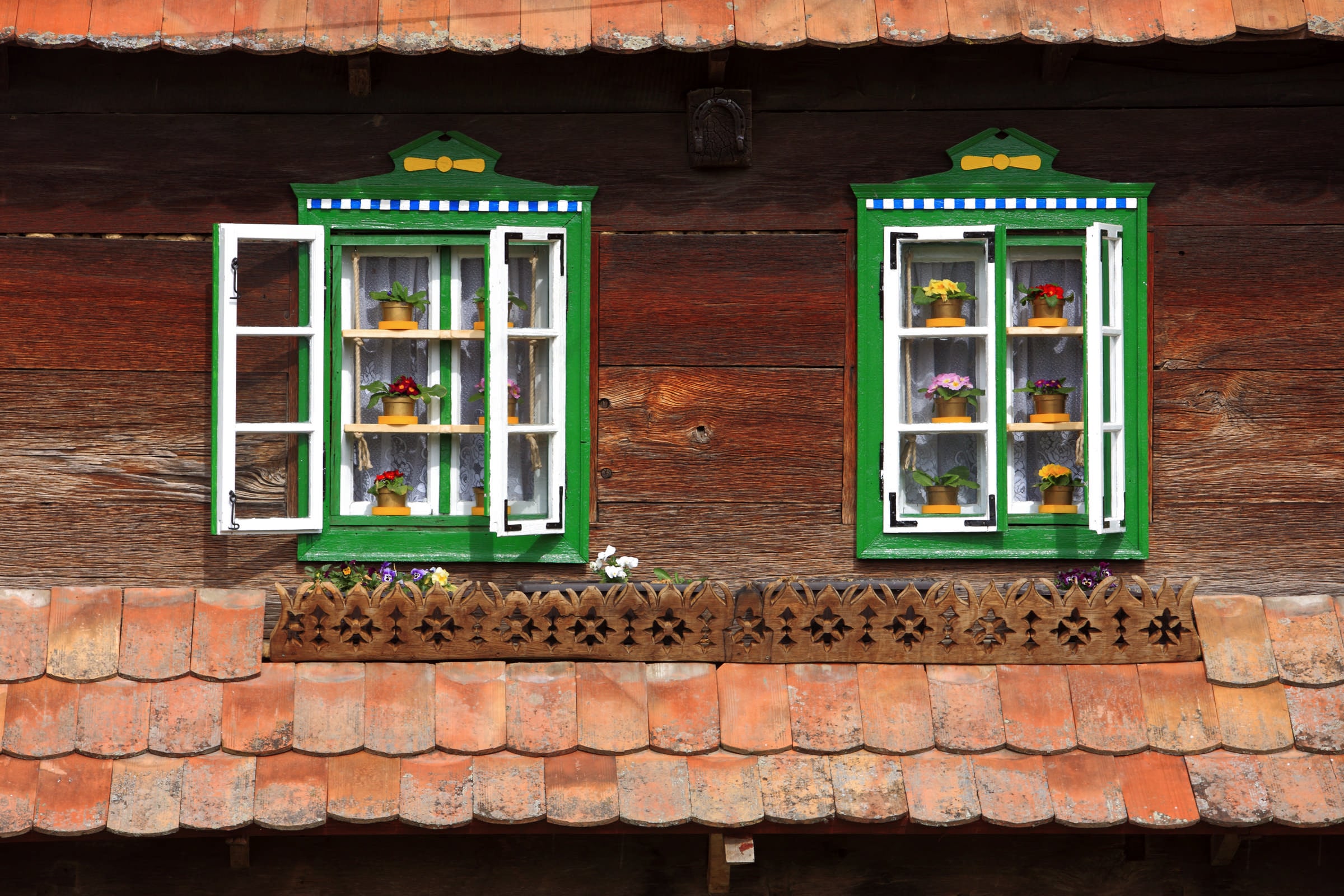 Lonjsko Polje Nature Park / Photo © Mario Romulic
Lonjsko Polje Nature Park / Photo © Mario Romulic
The programme takes place in April and lasts five days, six hours of work each.
Accommodation is provided free of charge in a dormitory in Krapje. The facility is equipped with a small kitchen and a bathroom, and has central heating. As volunteers will be sleeping on spare beds, they are required to bring their own sleeping bags. Groceries are provided free of charge, and bikes and vehicles are available to use for transportation within the Park.
5. Guardian of Plant Biodiversity in Brijuni National Park
There’s not much need for gardening on Brijuni islands - domestic wildlife and imported species such as mountain zebras and mouflons take care of landscaping by nibbling away at the grass at all times.
There’s a single item on the menu that the animals don’t like: a spiky flower called Spanish oyster thistle. Since the wildlife practically mows the lawn, it removes all natural obstacles that would prevent the spread of the Spanish oyster thistle, allowing it to take over whole areas that would otherwise be home to other plants.
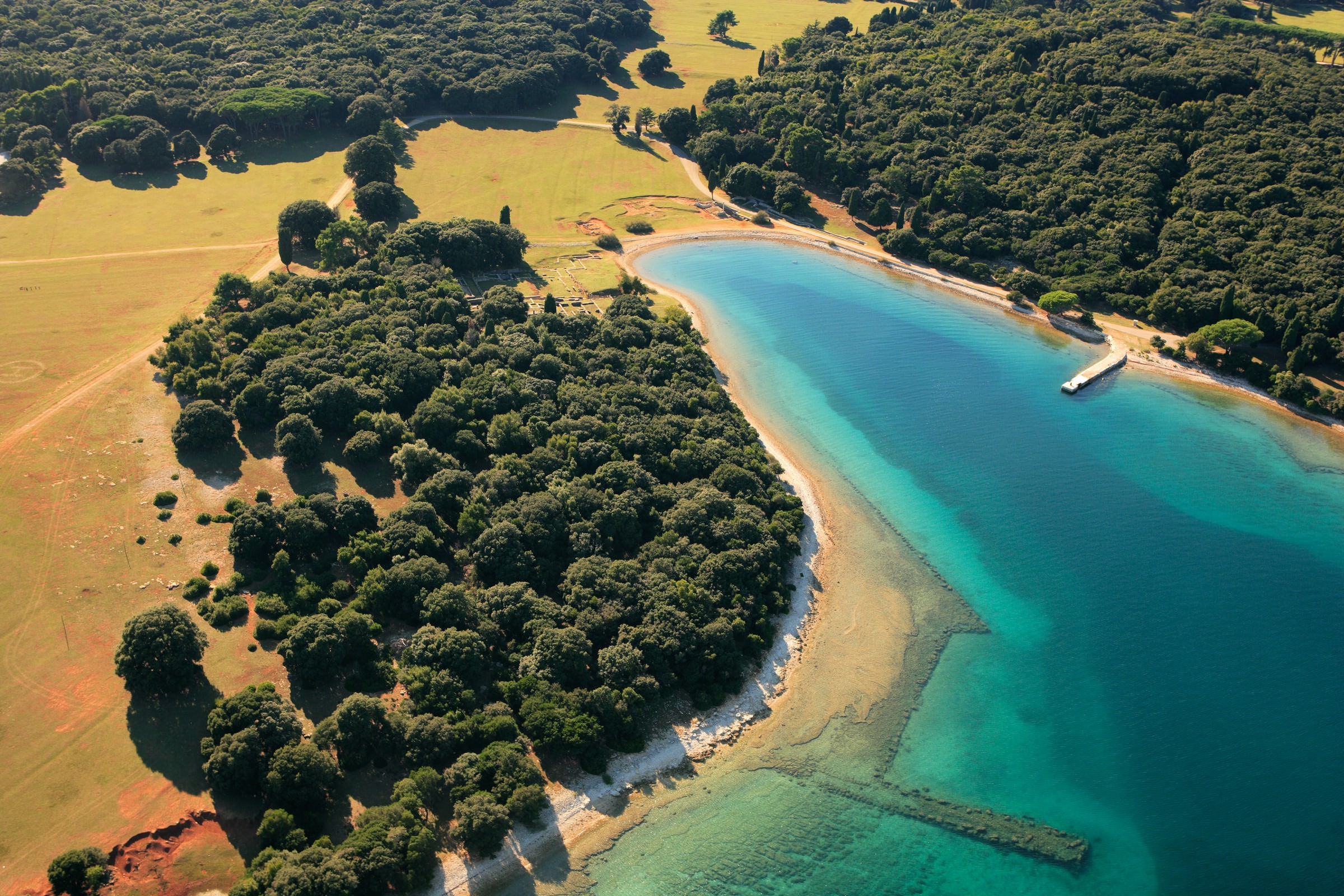 Brijuni islands / Photo © Mario Romulic
Brijuni islands / Photo © Mario Romulic
As a volunteer, you’ll help maintain the biodiversity on the meadows of Veliki Brijun island by keeping the pesky thistle in check. You’ll be removing the aggressive plant using provided gardening tools.
Volunteers are needed in the month of May and are required to put in 6 hours of work daily. Beyond that, the islands are yours to enjoy: explore the Safari and Ethno Parks, rent golf equipment and play on the golf course opened in 1922, or go for a swim at one of Brijuni’s pristine beaches.
The Brijuni are also a nice jumping off point for trips in Istria. Discover the ancient Roman monuments in Pula which is located only 7km away from Fažana, or visit the picture-perfect city of Rovinj.
 Wildlife on Brijuni islands / Photo © Mario Romulic
Wildlife on Brijuni islands / Photo © Mario Romulic
Accommodation is provided in one of the apartment buildings on Veliki Brijun island that are owned by the Park. Apartments are equipped with toilets, bathrooms, and a kitchen; rooms are shared with one or two other volunteers.
Groceries are provided free of charge and delivered to the apartment building, and one meal a day is also provided free of charge in the workers’ restaurant.
Volunteers have to arrange transport to Fažana town, and boat transportation to and from Veliki Brijun island is organised by the Park free of charge for the duration of the volunteer programme.
***
Applicants who don’t speak Croatian must be able to speak English in order to communicate with the park authorities and volunteer coordinators.
You can find more information about these and other volunteer programmes on the website Volunteer in Parks of Croatia.
Looking to apply? Fill out this form (in English), pick a programme you like and specify when you're free to participate, and the relevant programme coordinators will get back to you.
Please note that some of the programmes might not be accepting applications for the time being, or might be otherwise affected by epidemiological measures.
Check out our comprehensive Guide to the Nature and National Parks of Croatia.
Solar-Powered Catamarans Sail Through the Island of Mljet
February 13, 2022 - The iCat company is known for innovating in maritime navigation technology, seeking to connect the mainland with the islands in a fast, efficient and ecological way. This can already be seen on the island of Mljet, which now has three of its solar-powered catamarans.
Solar energy is the driving force behind the ships that Tomislav Uroda from Zagreb wants to make this type of transport more ecological, faster, and more comfortable, and his self-sustaining vessels have been succeeding on Mljet for several years, reports Index.hr.
Frustration at Tomislav Uroda's very rare and poor inter-island transport prompted him to try to work out a solution to this maritime problem in his own workshop. The idea that one larger ship sails several smaller ones a day, which will also be energy efficient and acceptable for Europe's future of reducing greenhouse gas emissions, combating climate change, and investing in green technologies, has grown into a successful international story.
"We wanted a better, more luxurious alternative"
At that time, the young mechanical and shipbuilding engineer, a native of Zagreb with roots in the island of Murter, started his business venture ten years ago by founding iCat, and in the years that followed he stood by the leading innovators in the world. He saw an opportunity to conquer the market in solar and electric ships.
"From the beginning, we didn't want to invent a cheap product, but we wanted a better, more luxurious version of that shipping, and therefore not only in the passenger, economic part but also in the technical part - from accumulation, batteries to solar," says Uroda.
Connecting the island with the mainland, making shipping a faster and more comfortable way to travel, and overcoming the problem of fuel shortages on the island were key problems in the Mljet National Park, where the first three solar-powered catamarans operate. These three ships named babyCat, powered by solar panels on the roof of the ship, are the first such self-sustaining ships in the world. They develop a speed of at most 9.5 knots and receive 54 passengers. Excess solar energy is stored in the batteries on board.
The boat can be recharged
"The solar-powered catamarans also has coastal chargers, which means that it can be recharged from the coastal port. This replenishment is a good option, and ships on Mljet have been sailing for several years in the summer months and there was never a need for recharging because enough energy is obtained from solar power,” the 50-year-old said.
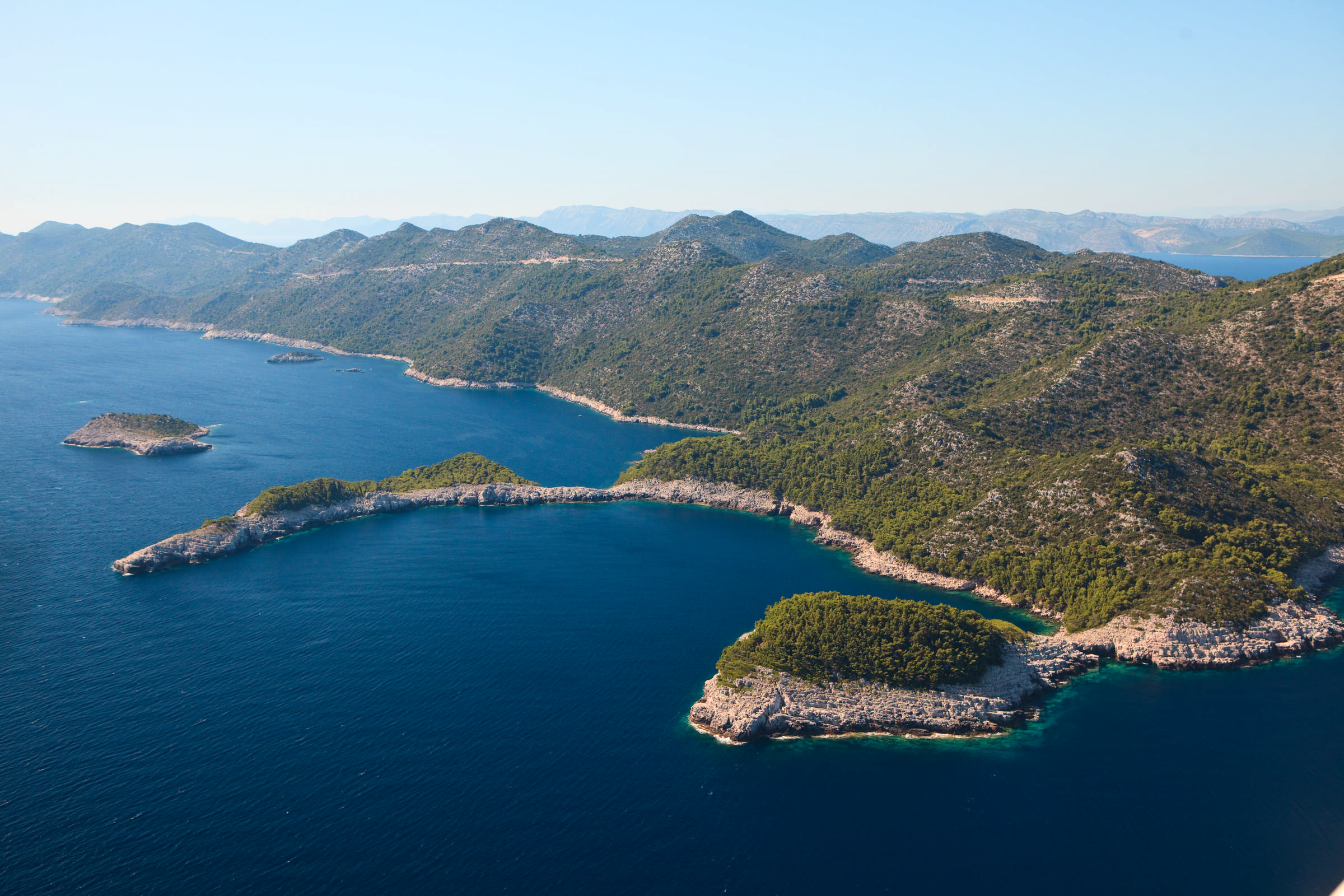
The island of Mljet (Photo: Mario Romulić)
"We built another such catamaran, but it was just finished at the time of the general closure. Just as air and bus transport disappeared, so did ours. In the few months of this pandemic, there was no interest in our ships at all, but we have been receiving inquiries every day for some time", says Tomislav, who plans to market his products all over Europe, and then, when the conditions are created, all over the world.
In addition to the solarCat ship, as presented at Jarun, on the same production platform it is possible to build two other types of solar-powered catamarans - one slightly wider, which will have a hundred seats and the other with a double bow, or a ship that does not turn while driving but operates shorter distances.
"We realized that this job is not attractive"
''The workforce is also a big problem'', says Uroda.
"We dreamed of having our own workers in the production plant, but over time we realized that this job is not attractive and that people will come and go here. Croatia no longer has a workforce. We are aware of the situation, but our development team is constant.", stressed Uroda.
Greater use of the potential of solar energy is one of the main goals of the European Green Plan, which aims to reduce carbon emissions by 55 percent by 2030. Intensified use of renewable energy sources and increasing energy efficiency are key factors in achieving this ambition.
Ambitions in Croatia need to be encouraged, and citizens need to be educated about the benefits of using solar energy, was the conclusion of a two-day conference "Days of the Sun" held at the end of October last year in Hvar. The solar sector is developing very slowly, although the price of such energy is lower than ever, it was said at the gathering.
For more information on the solar-powered catamarans by iCat, click here.
For more, check out our lifestyle section.
VIDEO: Breathtaking New Footage Shows Beautiful Mljet Island
November 4, 2021 – The southernmost and easternmost of Croatia's large, inhabited islands is beautiful Mljet island
A long, thin stretch of volcanic rock, located off the coast of Dubrovnik, over 84% of the island is covered by dense forest. The beautifully scented trees are perfect to cycle beneath in spring and summer. Hiding in the treetops, some of the island's birds and butterflies. They're not the only creatures to call this place home.
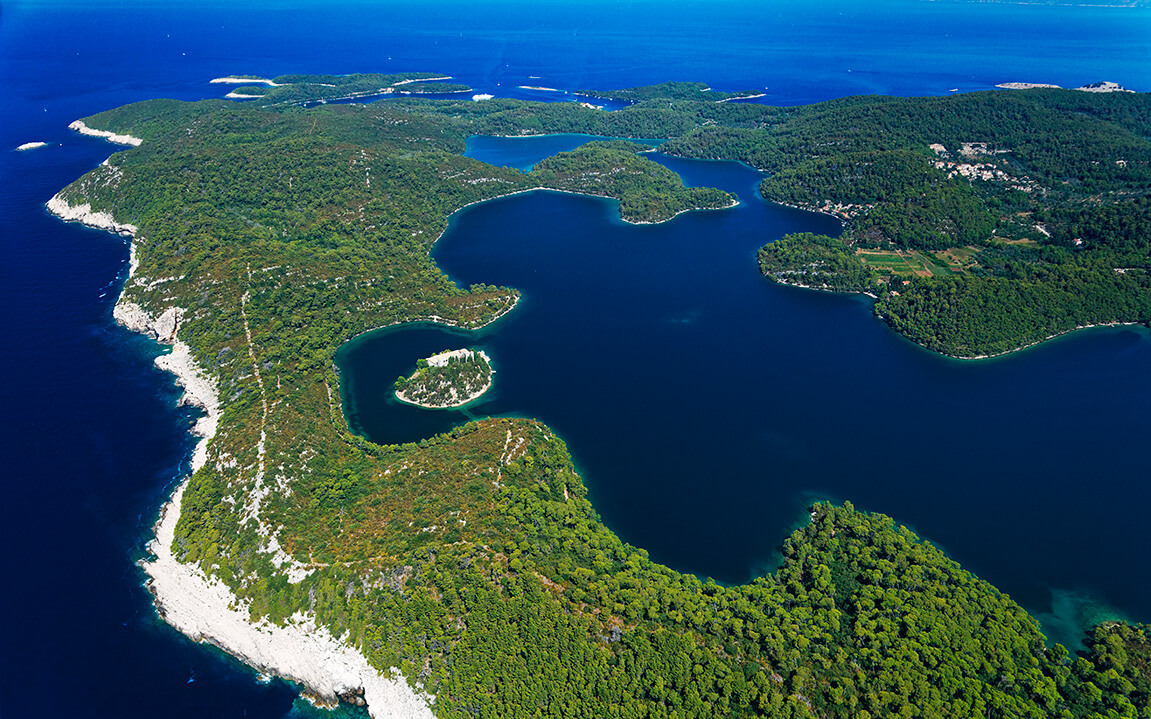
Famously, the most westerly quarter of beautiful Mljet island is designated as a National Park. Within this protected section of the island, two of Mljet's most recognisable features – saltwater lakes Veliko jezero and Malo jezero. On the small isle of St Mary in the middle of Veliko Jezero lake, you'll find an old Benedictine monastery. Nobody lives here anymore. But, folks do still live in the picturesque villages of Goveđari, Polače and Pomena within the park.
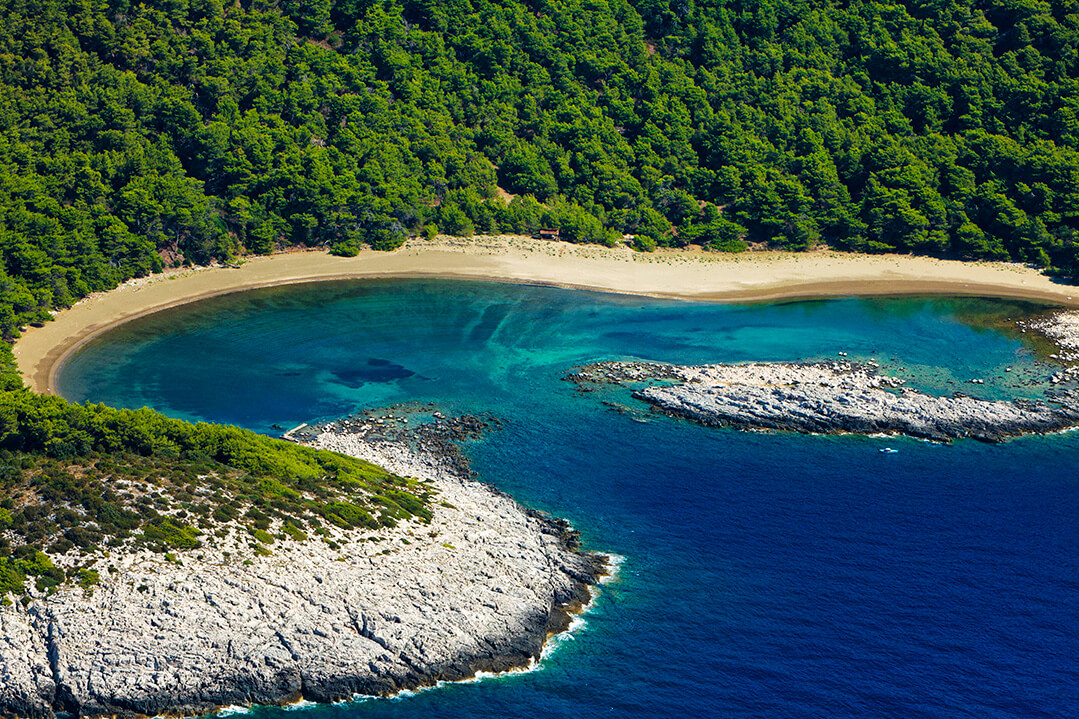
Living within the lake waters, rare molluscs, jellyfish and coral. Off the shores of the park, even more life is visible. Although, you might need a diving mask to see it best. Over 50 square kilometres of the Adriatic that surrounds Mljet is also protected within the park boundaries. Its protected status allows fish and coral to thrive here. These colourful waters are great for diving.
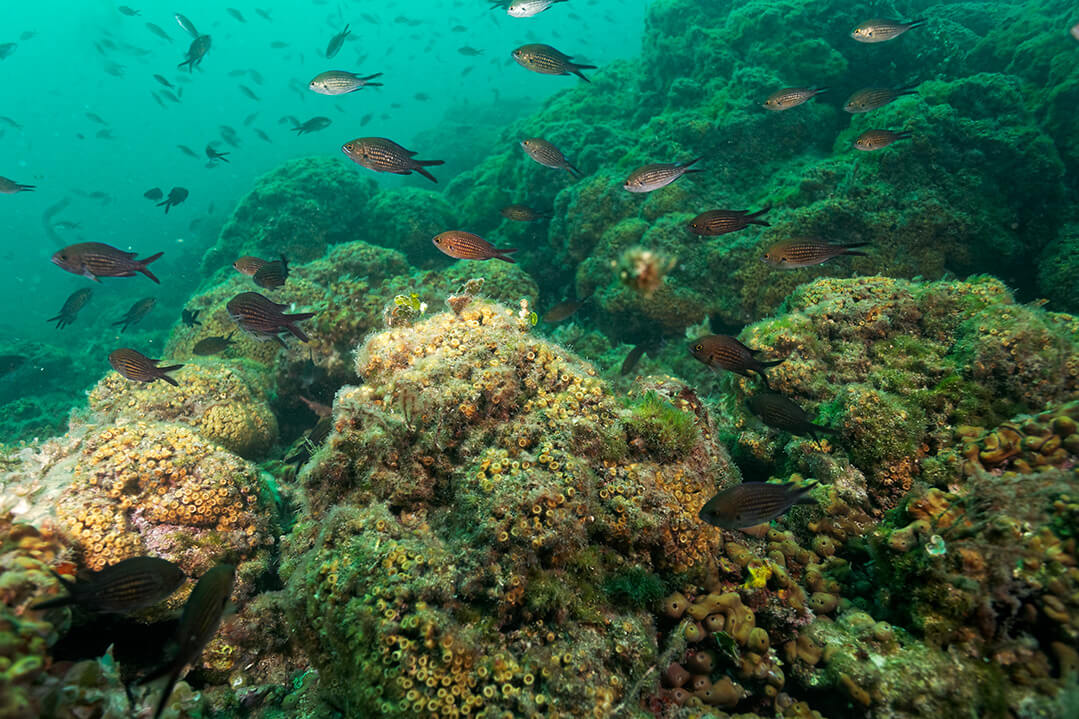
Some of the wildlife, nature, sights and activities of beautiful Mljet island have been captured in a new video compiled over this summer. The film is the latest work of Goran Šafarek, a biologist, travel writer and filmmaker from Koprivnica. He has been making similarly beautiful videos showcasing Croatian nature and destinations for over a decade. You can check it out below.
All images © Goran Šafarek
If you want to read more about Mljet island and Mljet National Park you can take a look at the Total Croatia guide to the island here
Mljet Birthday Photo Contest: National Park Awards the Best Photos
October 21, 2021 - In celebration of its 61st anniversary, a Mljet birthday photo contest has been announced and everyone is invited to submit their photographs in the categories of natural heritage, cultural and traditional heritage, and recreational activities in the National Park.
On the occasion of the celebration of the 61st birthday, the Mljet National Park announced a photo competition, reports Turističke Priče. The categories by which the best photographs will be judged are natural heritage, such as photographs of forests, sea, lakes, animal and plant species, landscapes, then the category of cultural and traditional heritage where photographs of monuments, buildings, folklore, and other intangible traditional heritage are applied, and recreational activities in the area of the Mljet National Park such as cycling, hiking, kayaking, diving, or some other outdoor activities.
The Mljet birthday photo contest is open from October 19 to 29, and the authors can submit more photos to the competition, which must be taken exclusively in the area of the Mljet National Park. Residents of the island of Mljet and its friends, visitors, lovers of nature and photography are all invited to participate in the competition. You can download the rules of the competition and the application form via the LINK.
All photos will be used for the purpose of promoting the park, and it will be interesting to look at the shots of Mljet from the perspective of visitors, but also the local population. If you have pictures of the Mljet National Park, here is an opportunity for your photo to help in branding and attracting new visitors to the green island, which according to legend was chosen as the home by the mistress of the Greek hero Odysseus, the nymph Calypso.
Only the beauty of Mljet surpassed hers and thus attracted the eternal traveler, Odysseus, to stay on this island for many years. Are there facts in the legend? Numerous experts do not doubt that the island of Ogigija from Homer's Odyssey is unquestionably Mljet.
"Magical island green forest...", "If four springs flow in a row through Bistrica water, side by side close to having increased, but each to their side..." - Odyssey V, 70-71
Others are skeptical of this claim. Romantics would say - only the sea knows the answer. But whatever the answer to this dilemma was one fact in the stone remained a cave bearing the name of the Greek adventurer, Odysseus.
And your photo may remain recorded on the 61st birthday of Odyssey Island National Park.
For more, make sure to check out our dedicated lifestyle section.
Mljet National Park Opens New Season for Visitors!
April 2, 2021 - Mljet National Park opens for a new season, allowing all visitors to enjoy the outdoors while following all prescribed COVID-19 measures.
Mljet National Park opened its doors for a new season on March 26, 2021!
At any time of the year, visiting Mljet National Park is a special and unique experience for every lover of nature, culture, and old customs, especially during this pandemic time, when it is recommended to stay outdoors.
Enjoying the natural and cultural values of the Mljet National Park is possible at promotional prices until April 5, 2021, namely 50 kuna for adults and 30 kuna for children and students. By purchasing a ticket through the webshop, visitors receive an additional discount on tickets, which amount to 40 kuna for adults and 20 kuna for children. Admission for children under 7 is still free.
The ticket also includes a boat ride and a visit to the island of Sveta Marija in the heart of the Great Lakes. You can visit the Mljet National Park every day from 8:00 am to 3:00 pm, and you can buy tickets on the webshop www.np-mljet.hr or at the Pomena and Info point sales points at the Great Lake.
Mljet National Park offers many opportunities to enjoy nature, and in it, every visitor has a corner just for themselves. When it is necessary to maintain physical distance, get closer to nature and explore it with numerous hiking and biking trails within the Mljet National Park, sail on the Great Lake, and breathe in the clean air surrounded by untouched nature.
"To preserve your health, as well as the health of the employees of the National Park, please bring a face mask that needs to be worn at the Mljet National Park sales points, in contact with NP employees, as well as when using boats to tour the lake and the island of Sv. Marija. Regularly disinfect your hands, take care of the physical distance when touring the park and when waiting to board the boat, and purchase tickets following the markings. We look forward to your arrival and are at your disposal for any additional information by calling tel. 020 744041 and e-mailing This email address is being protected from spambots. You need JavaScript enabled to view it.," says the National Park.
Source: Dalmatinski Portal
To read more about travel, follow TCN's dedicated page.
For the latest travel updates and COVID-19 news from Croatia, CLICK HERE.
To learn more about Mljet National Park, CLICK HERE.
Volunteer at Mljet National Park for 7 Days Beautiful Island Exploration
February 14, 2021 – Want to spend 7 days making your way across one of Croatia's most unique island landscapes? Volunteer at Mljet National Park and get a week's free accommodation, with English speaking and Croatian speaking volunteers both welcome
Recently ranked by global player Forbes as among the top five Mediterranean undiscovered islands, Mljet can be yours to explore for free if you have some free time on your hands. Mljet National Park is looking for volunteers to help clear and maintain hiking trails on the island. If you volunteer at Mljet, you'll get seven nights of complimentary accommodation, plenty of free time and the opportunity to make your way across one of Croatia's most beautiful and unique island landscapes.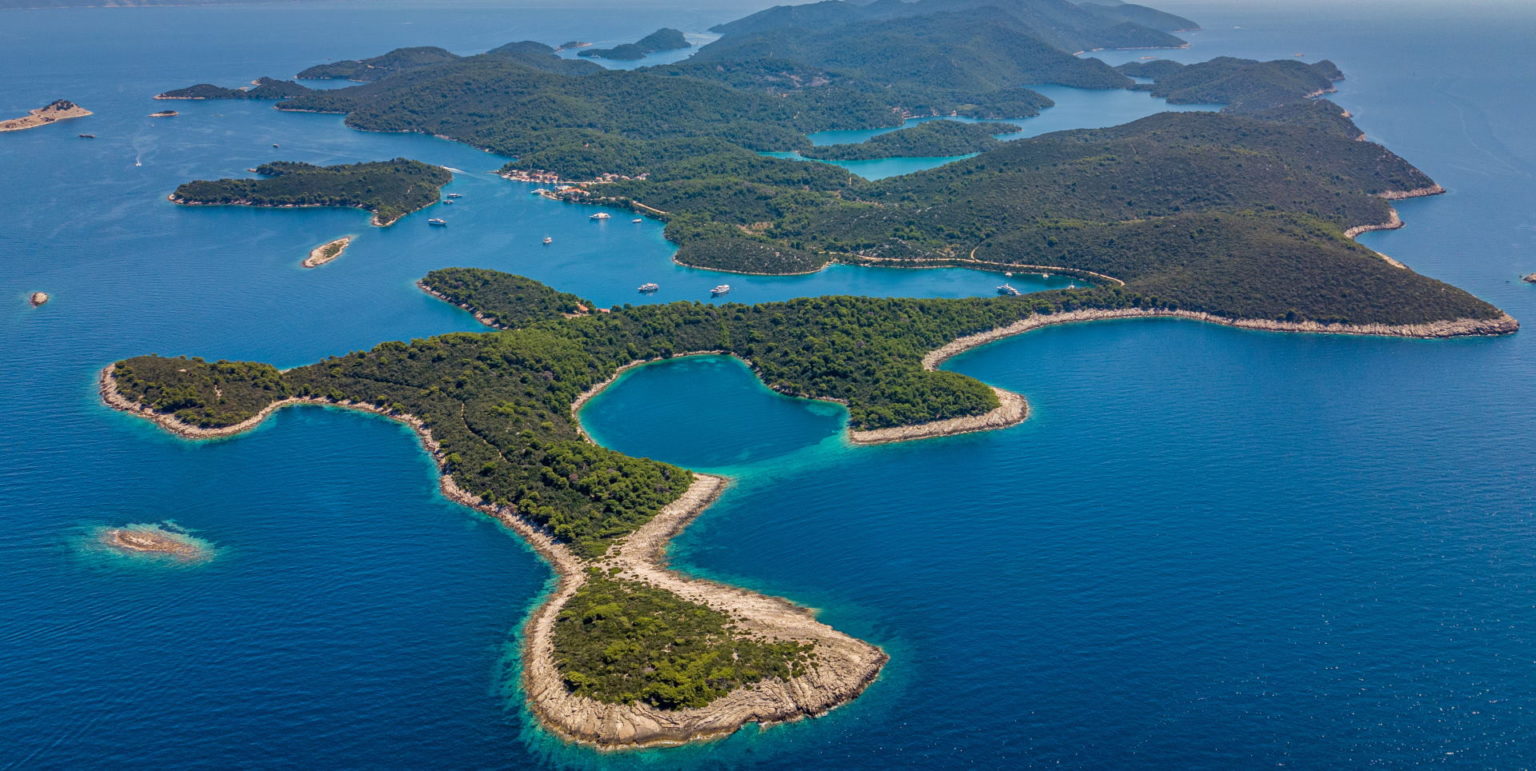 © Mljet National Park
© Mljet National Park
Those who volunteer at Mljet National Park will get to explore the entire north-west part of Mljet island, a protected area of stunning natural beauty that borders two famous saltwater lakes –Veliko Jezero and Malo Jezero which stretch 4 kilometres into the island's interior. In the middle of the largest lake, there is a small island, Melita (Sveta Marija) on which a 12th-century Benedictine monastery picturesquely sits.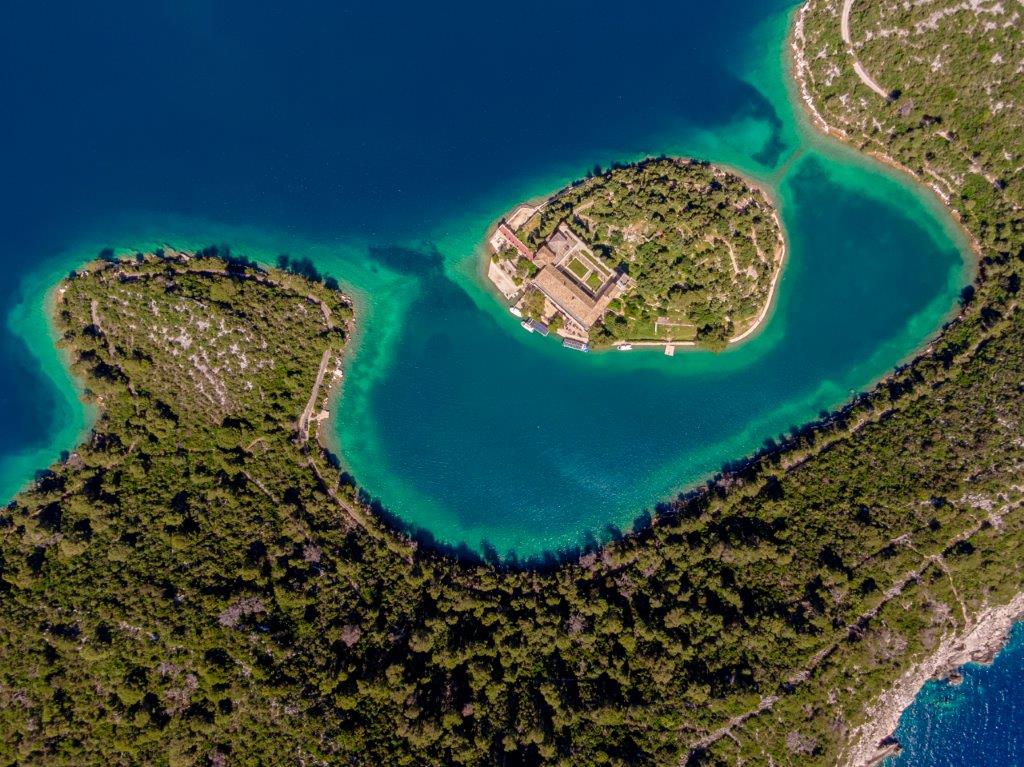 The island of Sveta Marija © Mljet National Park
The island of Sveta Marija © Mljet National Park
The oldest marine protected area anywhere on the Mediterranean, as Mljet National Park stretches over almost 5300 hectares, there's no guarantee these spectacular lakes will be within your view as you volunteer at Mljet. But, you will have plenty of time to explore the park and the island's incredible sights – volunteering hours are restricted to just six hours per day.
Over 40 kilometres of hiking trails run along the shoreline and through the forests of the park. Those who volunteer at Mljet will be asked to clear trails that have become obstructed by winter's strong winds blowing down trees and branches. Any equipment needed for the tasks, like compulsory work gloves, hats and t-shirts, will be provided by park authorities to all who volunteer at Mljet.
The groups required to volunteer at Mljet will be comprised of no less than 6 people and no more than 12 people at a time. You can apply to volunteer at Mljet alone - and maybe make some new buddies - or you can apply to go with a friend or friends. Both English speakers and Croatian speakers are invited to apply. Free accommodation is supplied in the Cullier building, owned by the Park. There are 7 rooms with bunk beds, toilets, showers, kitchen, living room. The building is just 2 km away from the village of Pomene, which has the only hotel on the island, several restaurants and two shops that are open during the summer. All meals are also provided free to those who volunteer at Mljet.
When can I volunteer at Mljet National Park?
Volunteer positions are available between February and November with the following being the specific weeks:
27/02 - 06/03
06/03 - 13/03
21/03 - 27/03
27/03 - 03/04
10/04 - 17/04
17/04 - 24/04
15/05 - 22/05
11/09 - 18/09
25/09 - 02/10
02/10 - 09/10
09/10 - 16/10
Volunteering lasts 7 days, one day of which is a free day - you can explore the park or take part in a tour of the island which the park organises as thanks to all volunteers. Volunteers will work 6 hours a day for the 6-day duration, although this 6 hour period does include one full hour of rest time. If there are unfavorable weather conditions (strong sun, wind, etc.) working hours may be reduced. Volunteers require only physical readiness and the desire to stay and work within a natural, outdoor environment. As the volunteering work requires physical strength and dexterity, these particular positions at the park are sadly not open to those with disabilities. Local transport within the Park is provided. Travel expenses for arrival and departure from the Park are borne by the volunteers themselves. The Ulysses cave on Mljet island © TZ Mljet
The Ulysses cave on Mljet island © TZ Mljet
During the free time you'll have on the island, you can walk, hike or bicycle on the park's trails, rent kayaks and canoes to explore the stunning saltwater lakes, go diving or take diving lessons, rent a scooter or car to explore the whole island and its many sights, or just chill out with your fellow volunteers, park staff and the park's visitors at the accommodation centre or in a local tavern.
Want to extend your stay in Croatia by a week with free accommodation on an incredible island? Got some free time on your hands and an appreciation of the great outdoors? If this opportunity sounds like it might be for you, you can fill in a form and apply here
Made in Croatia: Three Solar-powered Boats Sail on Mljet Lakes
November 6, 2020 - Three solar-powered boats, completely made in Croatia, can be found sailing on the Mljet lakes.
"They are great because we can show how we care for Croatian production at the National Park, but above all, about protecting nature because they are boats that emit zero pollution," said the director of the Mljet National Park, Ivan Sršen, for HRT.
"All three ships bear the names of our people who died in the Homeland War."
These boats can sail for 5 hours at a speed of 5 knots. While they can reach 9 knots, that speed is not necessary to sail on the lake. If there are days without sun, the boats can be connected electrically, though Sršen claims they haven't needed to so far.
Mljet National Park, the oldest protected marine area in the Mediterranean, is celebrating its 60th anniversary this year. The magical island of Odysseus is known for the phenomenon of salty Mljet lakes and a 400-year-old coral reef.
"The magical island of Odysseus is known for the phenomenon of the salty Mljet lakes because they are connected to the open sea by the Solin channel and every 6 hours, based on the tides, the sea enters the lakes, and every 6 hours, it leaves the lake and creates this current under the big and small bridge," explains the head of the Department for Tourism and Promotion of NP Mljet, Diana Dabelić
Mljet's underwater world is enchanting, boasting coral that stretches over 650 square meters. It is 300-400 years old.
"It is famous because it is full of life. The biodiversity is great, a real natural phenomenon," said Petar Kružić from the Faculty of Science in Zagreb.
"Grouper breeds in the Great Lake, 90 percent of the groupers we have on Mljet breed in the Great Lake. Larger fish also come here," points out Kružić.
This year, only 25% of last year's tourist traffic was realized at Mljet NP, but crowds are not a priority here.
Diana Dabelić added that it was important that visitors who came to the oldest marine protected area are firstly satisfied with the service provided.
Due to the coronavirus pandemic, there will be no grand 60th birthday celebration for Mljet National Park. However, the implementation of several projects financed by European funds is underway.
You can watch the full video about the magical world of Mljet on HRT.
To read more about lifestyle in Croatia, follow TCN's dedicated page.
Croatia Filming Locations Are Best Again As Succession Bags 7 Emmys
September 23, 2020 – Following incredible success with Game Of Thrones, Mamma Mia and others, Croatia filming locations prove to be the best again as HBO's Succession wins 7 Emmys
Historic Dubrovnik was always pretty enough to attract people from far and wide. Dubrovnik has a lot of sights to visit. In addition, it offers many activities such as hiking, cycling, sailing, boat ride, Seabob experience etc. But, following its appearance in TV show Game Of Thrones, interest in visiting the walled city went through the roof. Tourists were not the only ones who wanted to come.
HBO drama Succession is just the latest hit to take advantage of the spectacular scenery while filming in Croatia. The show has just bagged no less than seven prestigious Emmy awards for the season partially filmed in Croatia. In the drama series category, it picked up Emmys for Best Leading Male Role, Best Guest Role, Best Casting, Best Directing, Best Screenplay and Best Picture Editing.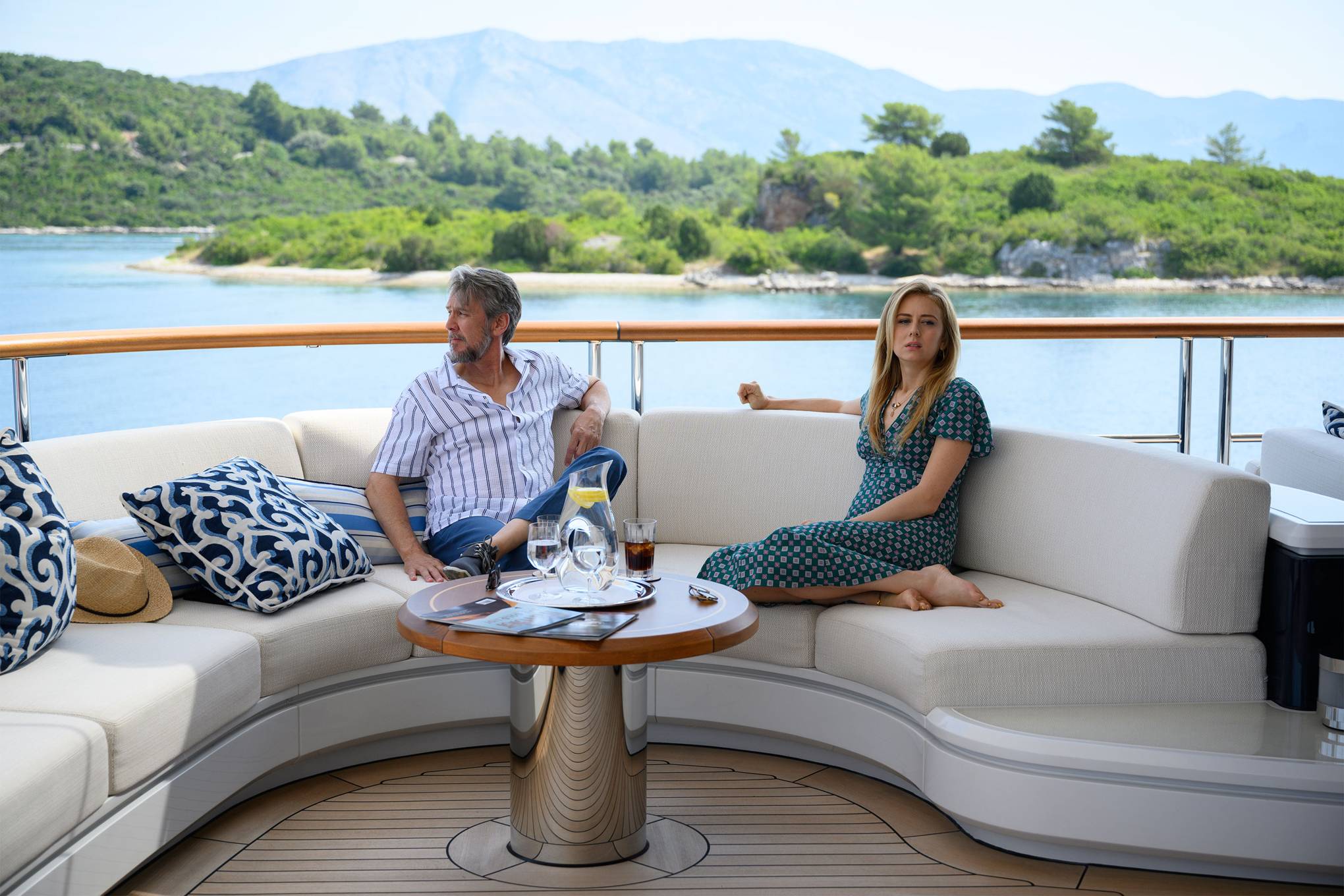 Cast members filmed aboard a yacht with beautiful Croatia and its Adriatic waters as the backdrop © HBO
Cast members filmed aboard a yacht with beautiful Croatia and its Adriatic waters as the backdrop © HBO
The shooting took place over 12 days in July 2019, primarily on a yacht on which the show's central characters, the Roy family, were taking a holiday. The Croatia filming locations used were the waters around Cavtat, Korcula, Mljet and Sipan. The series ventured into more urban areas of Croatia and, for those scenes, filming locations in Zagreb and Rijeka were sourced. The German-built Solandge was the yacht used in the filming and costs as much as $1.1million (£850,000) to rent for one week.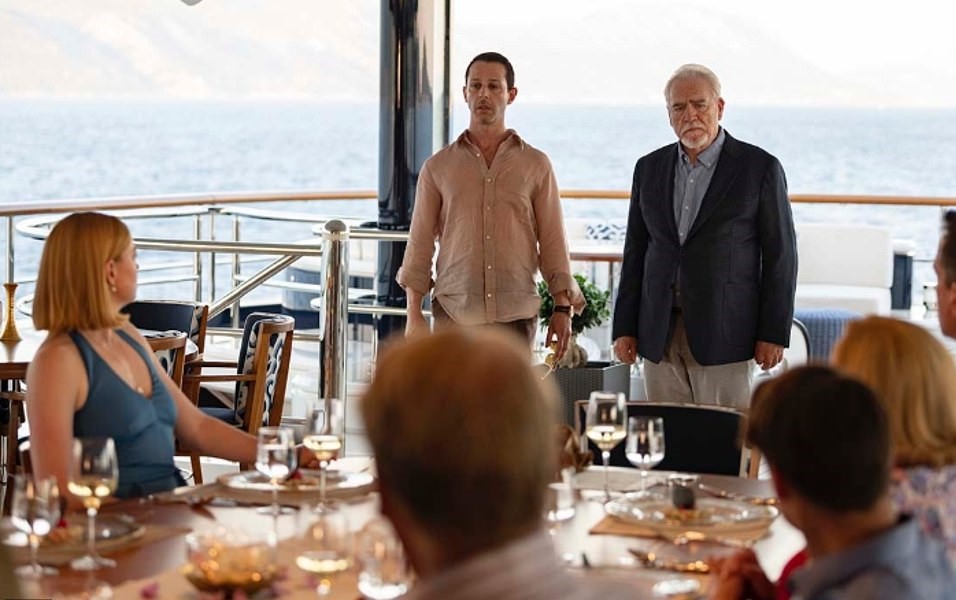 The Roy family aboard the yacht Solandge in Croatian waters © HBO
The Roy family aboard the yacht Solandge in Croatian waters © HBO
Now in its third season, Succession centres on the dysfunctional Roy family, owners of a global media and hospitality empire. It stars British actor Brian Cox as the ailing family patriarch with Kieran Culkin heading up the otherwise all-American cast. A total of 613 people worked on the shooting of Succession in Croatia, of which 595 were Croatian (161 film workers, three trainees and 431 extras).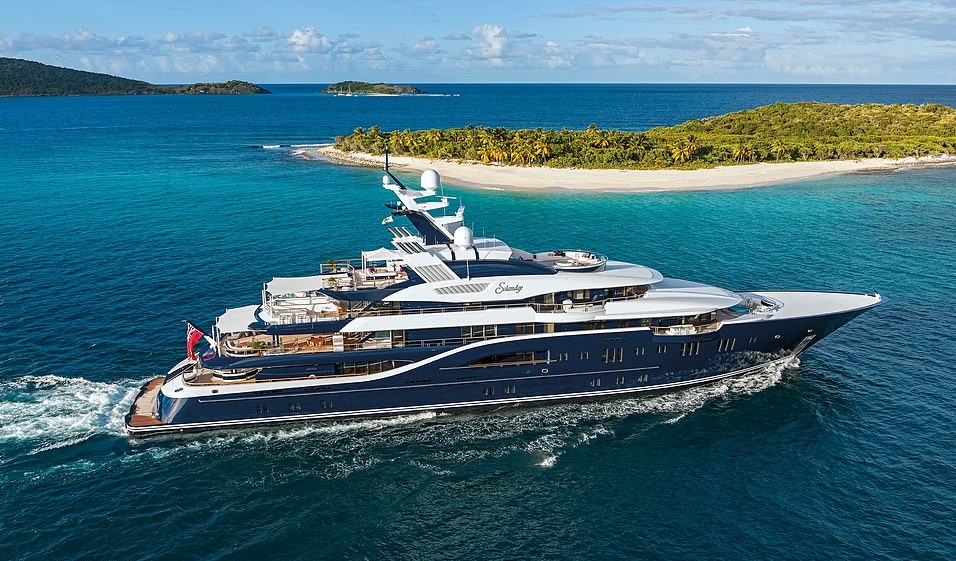 Solandge is currently one of the most luxurious yachts in the world © Moran Yachts
Solandge is currently one of the most luxurious yachts in the world © Moran Yachts
In recent years, major movies such as Star Wars, Robin Hood and one installment in the long-running James Bond series have joined the likes of Game Of Thrones and Mamma Mia in enjoying Croatia filming locations. However, filming in Croatia goes back much further than that. During the 1970s and early 1980s, no less than three Oscar-winning movies used Croatia filming locations - Fiddler on the Roof (1971), The Tin Drum (1979) and Sophie’s Choice (1982).
You can read more about filming in Croatia and Croatian filming locations by reading our dedicated section here
For the latest travel info, bookmark our main travel info article, which is updated daily.
Read the Croatian Travel Update in your language - now available in 24 languages
Join the Total Croatia Travel INFO Viber community.
PHOTOS: Lily Allen And Lepa Brena Arrive In Croatia
August 20, 2020 – Croatian coast a hit in August 2020 with international pop stars including Lepa Brena and Lily Allen
Croatia's coast has once again proved an irresistible draw to holidaying celebrities. The latest famous arrivals include regional pop megastar Lepa Brena and hit British singer Lily Allen.
Both Lepa Brena and Lily Allen have taken to their social media accounts over recent hours to announce their arrival in the country. Each has posted pictures of their vacations on the beautiful, sun-soaked coast of Dalmatia.
Lepa Brena, the revered originator of the massively popular regional pop-folk sound posted pictures from Mljet island, but Lily Allen has already travelled between Lastovo and Vis island. And while photos taken by Brena have been all about the beautiful Croatian scenery, Lily's have been smiling selfies as she thoroughly enjoys a break with her family. Here's how they saw Croatia through their social media on the first days of their visits.
Lepa Brena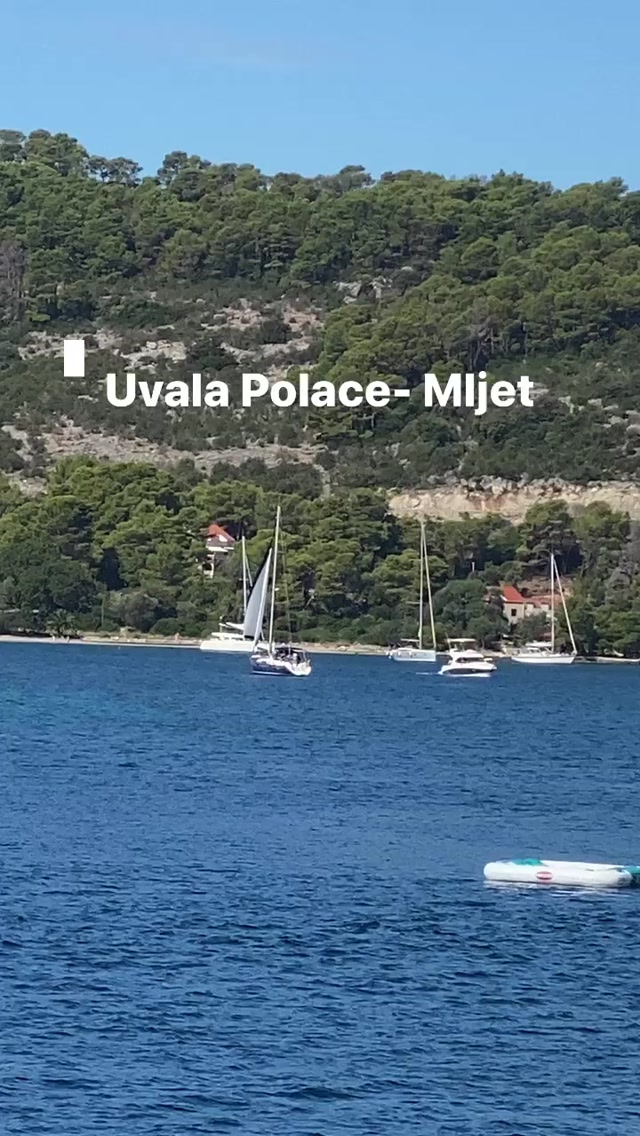

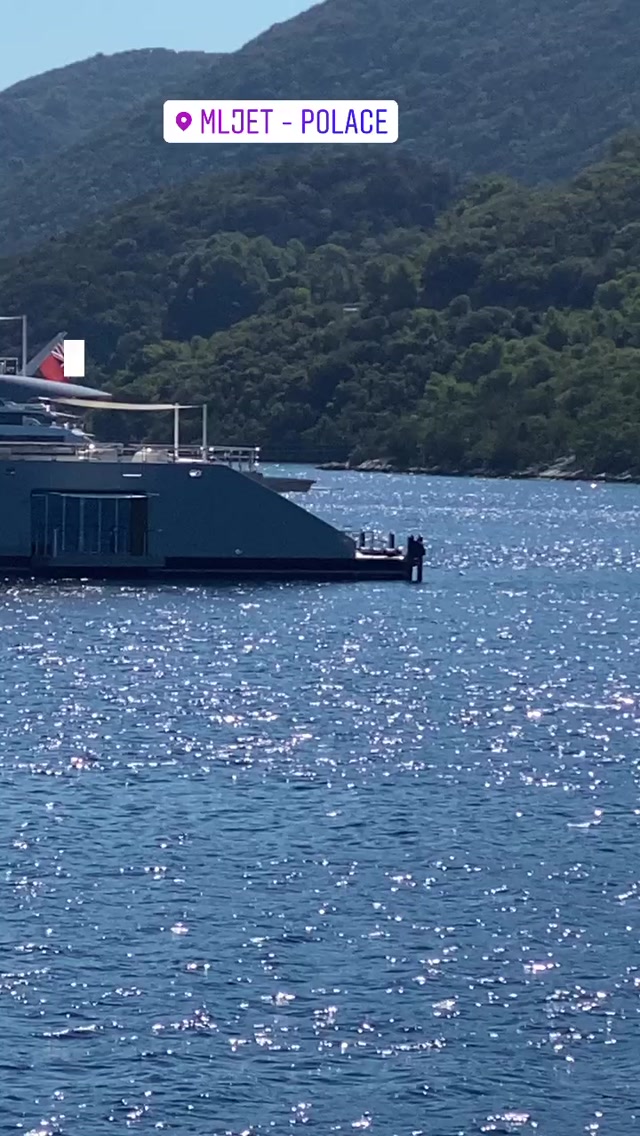
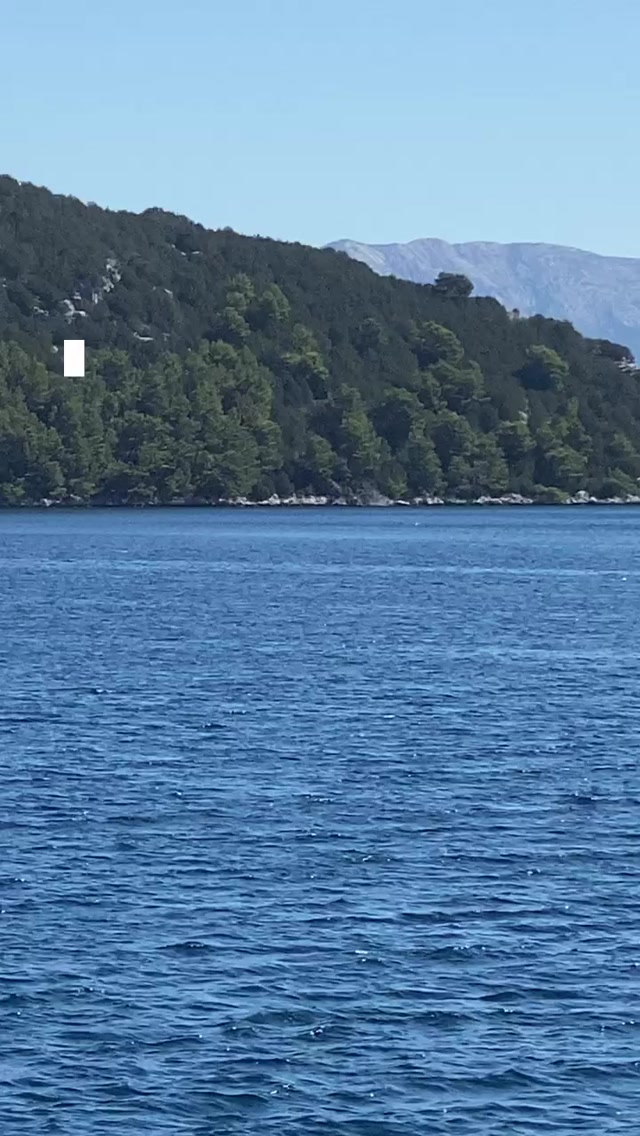
Lily Allen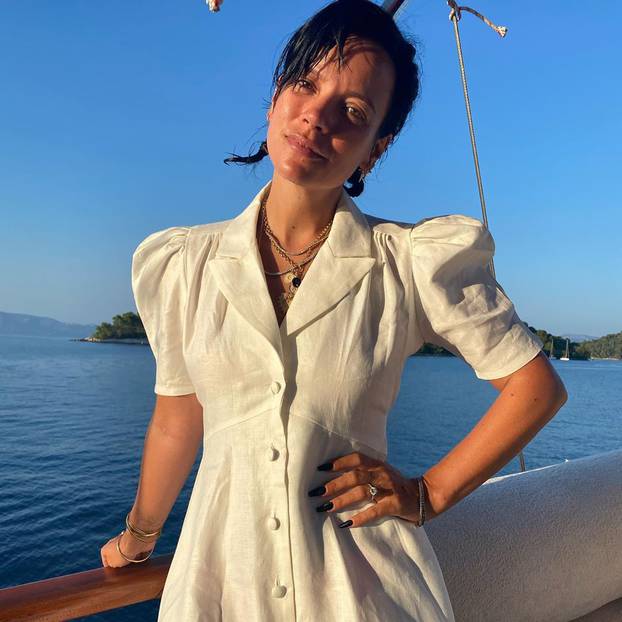
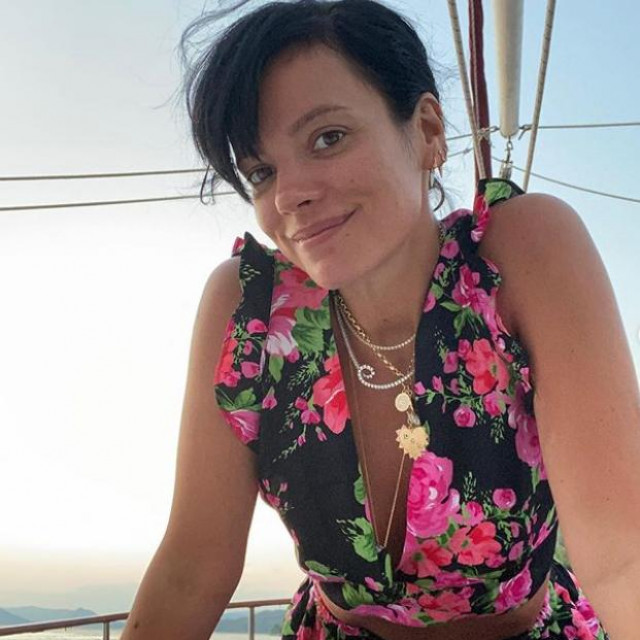
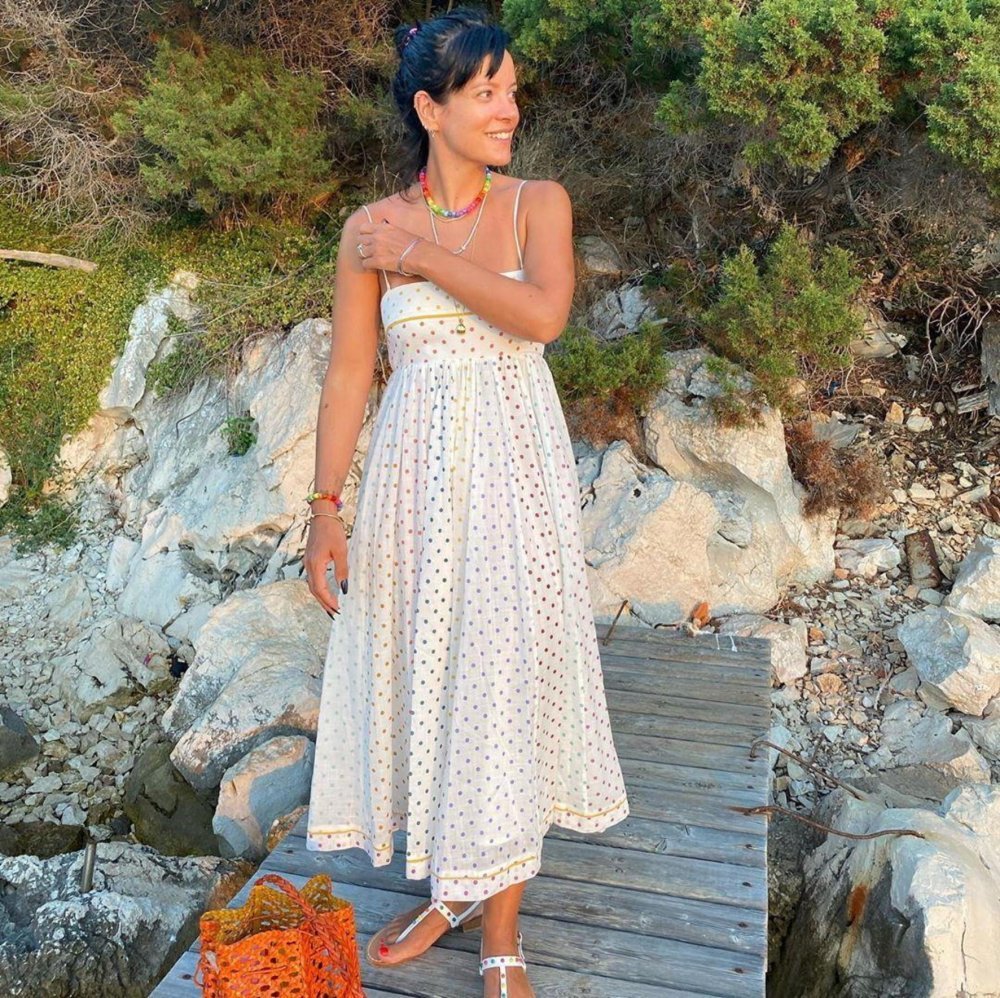

All images sourced from Instagram


